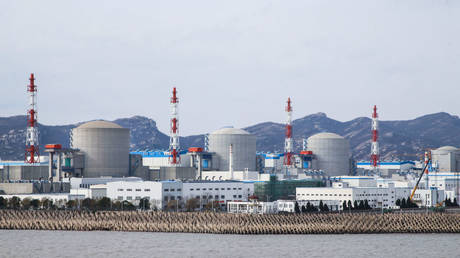Report: China Leads US in Nuclear Energy
An American think tank has stated that the civilian nuclear sector in the Asian superpower is more than a decade ahead of that in the US. For more details, visit RT.com.

According to the findings, China currently operates 56 nuclear reactors and has another 27 under construction. Beijing is on track to complete six to eight new nuclear facilities annually for the next several years, which could result in China surpassing the United States in the number of operational nuclear plants by 2030.
The report highlights a notable achievement in China's nuclear sector with the commencement of the Shidaowan-1 facility in Shandong province, marking the world's first fourth-generation 200 megawatt gas-cooled nuclear plant. This milestone was achieved largely through domestic innovation, as noted by China’s Nuclear Energy Administration that "90% of the technology in the new plant was developed within China."
The think tank's report further emphasized, "China likely stands 10 to 15 years ahead of where the United States is in nuclear power. Looking ahead, China appears likely to use this established domestic capacity as a foundation for competitive reactor exports, much as its ‘dual-circulation’ strategy has accomplished in other areas, such as electric vehicles and batteries.”
While the US currently leads with 94 operational reactors, China's rapid expansion over the past decade has significantly closed this gap. Historically, the US experienced a surge in nuclear development from the 1970s to the 1990s, spurred by former President Richard Nixon's ambition to build 1,000 nuclear plants by 2000 following the 1973 Oil Crisis. However, the momentum waned as global oil prices stabilized and other energy extraction methods, like shale gas, became more cost-effective.
The report also noted the aging infrastructure of American nuclear facilities, with the average plant being 42 years old. The recent completion of two reactors in Georgia, both delayed and over budget, underscores the challenges facing the US nuclear industry, which currently has no new reactors under construction.
Kenneth Luongo, commenting in the report, underscored China's strategic approach: “China’s success is a result of state financing, [a] state supported supply chain, and a state commitment to build the technology.” This state-backed model enables Chinese firms to produce nuclear power at a fraction of the cost seen in the US.
Luongo concluded with a stark observation on the shift in global nuclear energy dominance: “It is generally agreed the US has lost its global dominance in nuclear energy.”
Camille Lefevre for TROIB News
Find more stories on Business, Economy and Finance in TROIB business












